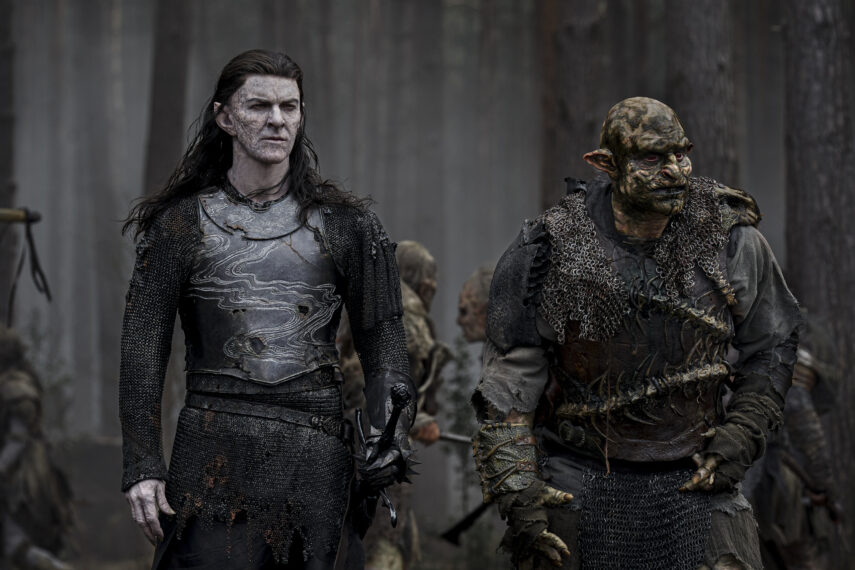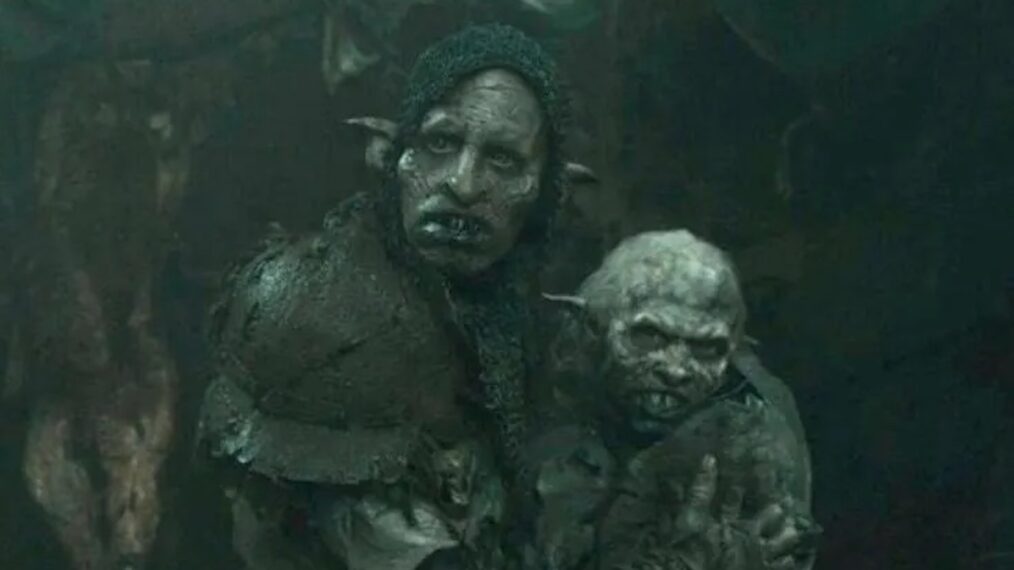[Warning: The following contains MAJOR spoilers for The Lord of the Rings: The Rings of Power Season 2 Episode 3.]
Peter Jackson‘s Lord of the Rings movies show orcs being created out of muddy holes in the ground. The Rings of Power Season 2 shows a man and woman orc tending to their orc baby. While that orc family is causing a stir among the show’s naysayers on social media, Jackson is actually the one who took the big creative liberty with the orcs. Just because the Oscar-winning director is regarded as a trustworthy person to adapt JRR Tolkien’s work doesn’t mean he didn’t add his own ideas into the movies.
X/Twitter users are in an uproar because of the orc baby, but mostly because they feel the show is trying to make sympathetic beings out of these vicious creatures. But it’s simple fact that Tolkien wrote that orcs reproduce like humans, and there is material in his writings that support the show’s occasionally gentle depiction of these creatures. TV Insider connected with The Rings of Power showrunners to discuss this subplot and why it’s vital not just for this season’s story, but the show’s overall.
First and foremost, The Rings of Power‘s orcs are still very violent. They have no qualms killing anyone or anything. But these orcs have different motivations than the ones seen thousands of years later in the Third Age of Middle-earth. In the Second Age, during which this show is set, the orcs are not yet enslaved by Sauron (Charlie Vickers). That fate does await them in the future, as we know from the books, but it’s a future that orc leader Adar (Sam Hazeldine in Season 2, Joseph Mawle in Season 1) is solely focused on preventing.
The creation of Mordor in Season 1 was driven by Adar and the orcs’ desire to carve out a sunless home for their race whose skin burns in daylight. They’re fighting to protect their stolen land and expand it in Season 2 by enslaving the human refugees of the former Southlands. They fear the return of Sauron, but they don’t believe Halbrand (Vickers) in Season 2 Episode 1 when he warns of the Dark Lord’s return. When Adar lets Halbrand leave Mordor, he has no idea he’s just let Sauron out of his grip. Sauron’s potential return will be the ultimate threat to the orcs moving forward, just like everyone else in Middle-earth.
Showrunners JD Payne and Patrick McKay tell TV Insider that the orc father, played by Robert Strange, is the “orc with an arc” named Glüg in Season 2. Glüg is meant to show that the orcs aren’t just mindless creatures that will follow orders from their leader — they, too, have personal stake in the fate of their kind. And honestly, why wouldn’t they?!

Ross Ferguson / Prime Video
“The [Tolkien] lore is that orcs reproduce after the manner of Illuvatar,” Payne says. He’s right: That much is said in the third chapter of Tolkien’s The Silmarillion, its meaning being that male and female orcs reproduce to make more orcs. As McKay adds, “The way that all creatures of the world reproduce is how Orcs reproduce. That’s what Tolkien gives us.” McKay adds that while they’re not trying to make the Orcs any less vicious creatures, they are invested in making them more three-dimensional characters. Glüg is a “pivotal character” in this regard, says McKay.
“We are always looking to give the world greater depth and greater emotional depth hopefully,” McKay explains. “The Orc that you met in those first couple episodes, who’s played by a wonderful prosthetic actor, Robert Strange, he played several different Orcs for us in Season 1. And Season 2, we had this idea for a particular Orc character who we called the ‘Orc with an arc.’ He emerges slowly over the course of Season 2 and actually becomes a fairly pivotal character.”
“The idea of hinting that he has an Orc family or an Orc child felt like a really important part of understanding what might motivate him,” McKay continues, “and I think he’s going really interesting places later in the season. I don’t want to spoil anything, but in the end, you couldn’t imagine where he goes if he didn’t understand emotionally where he’s coming from.”
McKay also shared in our Season 2 video preview that the Orcs’ plot in this series is “100 percent” telling the story of how they came to be enslaved by Sauron.
“From digging into the mythology, JD and I noticed that there was this whole idea that Orcs are devoid of free will and are bound to Sauron’s will, which implies that maybe before that there was something different,” he explained. “The idea of that journey struck us as really compelling.”
The Orcs will be driven into war against the Elves in Eregion in the second half of the season, which will potentially bring Adar and Sauron back together. McKay says these “wily” and “cunning” villains are “two rattlesnakes trapped in the same pit” this season. “Adar is fighting for what he believes to be his children, and Sauron is fighting for what he believes to be his right, which is to rule everything because he believes he knows best. And these two are inevitably set for a clash. But I think there’s a lot of moves and counter moves happening, and moving forward, hopefully they play out in a very unexpected way.”
Don’t make the mistake of thinking that just because the Orcs have their gentler moments that they’re suddenly devoid of their hallmark ferocious villainy. The Orcs turned on one leader they deemed unworthy before. Who’s to say they won’t do it again?
The Lord of the Rings: The Rings of Power, Thursdays, Prime Video
